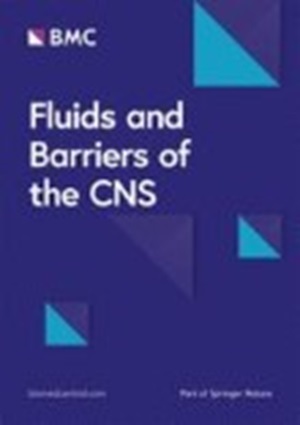对可渗透神经血管中的间充质细胞进行单细胞分析,发现了新的多种成纤维细胞亚群
IF 5.9
1区 医学
Q1 NEUROSCIENCES
引用次数: 0
摘要
众所周知,脉络丛和垂体中的血管具有可渗透的栅栏表型,允许分子自由通过,这与中枢神经系统其他部位的血脑屏障形成鲜明对比。对这些区段的内皮细胞以及分泌型神经细胞(脉络膜上皮细胞和垂体内分泌细胞)进行了详细研究,但对这些区段的血管周围间质细胞的研究较少。我们利用 Hic1CreERT2 Rosa26LSL-TdTomato 小鼠模型和 PdgfraH2B-EGFP 小鼠模型,通过组织学、免疫荧光染色和单细胞 RNA 序列分析,研究了脉络丛(CP)和垂体(PG)内可细分为 Pdgfra+ 成纤维细胞和 Pdgfra- 周细胞的间充质细胞。我们发现,CP 和垂体都拥有大量不同的 Hic1+ 间充质细胞,包括大量 Pdgfra+ 成纤维细胞。在垂体内部,我们在腺垂体前叶和神经分泌性垂体后叶发现了不同的Hic1+成纤维细胞亚群。我们还发现了CP、PG和脑膜间质区的多种不同标记物,包括碱性磷酸酶、吲哚-N-甲基转移酶和CD34。在可渗透的血管界面(包括CP、PG和脑膜)可发现新的、不同的间充质细胞亚群,它们通过产生结构蛋白、酶、转运体和营养分子对这两个器官做出不同的贡献。本文章由计算机程序翻译,如有差异,请以英文原文为准。
Single-cell analysis of mesenchymal cells in permeable neural vasculature reveals novel diverse subpopulations of fibroblasts
In the choroid plexus and pituitary gland, vasculature is known to have a permeable, fenestrated phenotype which allows for the free passage of molecules in contrast to the blood brain barrier observed in the rest of the CNS. The endothelium of these compartments, along with secretory, neural-lineage cells (choroid epithelium and pituitary endocrine cells) have been studied in detail, but less attention has been given to the perivascular mesenchymal cells of these compartments. The Hic1CreERT2 Rosa26LSL−TdTomato mouse model was used in conjunction with a PdgfraH2B−EGFP mouse model to examine mesenchymal cells, which can be subdivided into Pdgfra+ fibroblasts and Pdgfra− pericytes within the choroid plexus (CP) and pituitary gland (PG), by histological, immunofluorescence staining and single-cell RNA-sequencing analyses. We found that both CP and PG possess substantial populations of distinct Hic1+ mesenchymal cells, including an abundance of Pdgfra+ fibroblasts. Within the pituitary, we identified distinct subpopulations of Hic1+ fibroblasts in the glandular anterior pituitary and the neurosecretory posterior pituitary. We also identified multiple distinct markers of CP, PG, and the meningeal mesenchymal compartment, including alkaline phosphatase, indole-n-methyltransferase and CD34. Novel, distinct subpopulations of mesenchymal cells can be found in permeable vascular interfaces, including the CP, PG, and meninges, and make distinct contributions to both organs through the production of structural proteins, enzymes, transporters, and trophic molecules.
求助全文
通过发布文献求助,成功后即可免费获取论文全文。
去求助
来源期刊

Fluids and Barriers of the CNS
Neuroscience-Developmental Neuroscience
CiteScore
10.70
自引率
8.20%
发文量
94
审稿时长
14 weeks
期刊介绍:
"Fluids and Barriers of the CNS" is a scholarly open access journal that specializes in the intricate world of the central nervous system's fluids and barriers, which are pivotal for the health and well-being of the human body. This journal is a peer-reviewed platform that welcomes research manuscripts exploring the full spectrum of CNS fluids and barriers, with a particular focus on their roles in both health and disease.
At the heart of this journal's interest is the cerebrospinal fluid (CSF), a vital fluid that circulates within the brain and spinal cord, playing a multifaceted role in the normal functioning of the brain and in various neurological conditions. The journal delves into the composition, circulation, and absorption of CSF, as well as its relationship with the parenchymal interstitial fluid and the neurovascular unit at the blood-brain barrier (BBB).
 求助内容:
求助内容: 应助结果提醒方式:
应助结果提醒方式:


